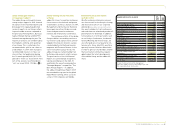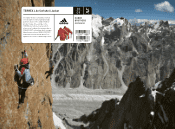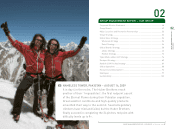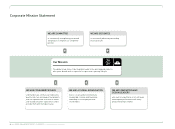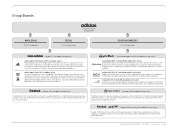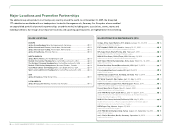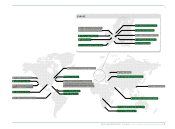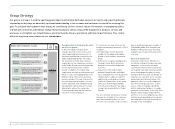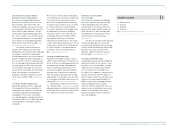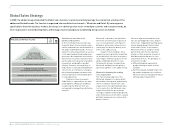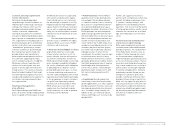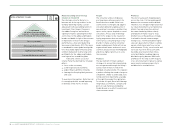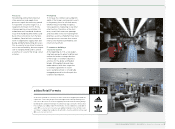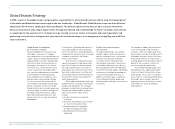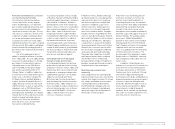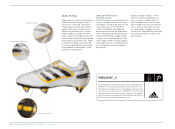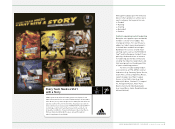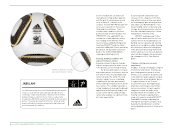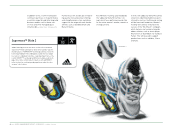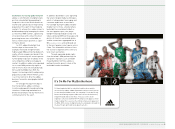Reebok 2009 Annual Report Download - page 59
Download and view the complete annual report
Please find page 59 of the 2009 Reebok annual report below. You can navigate through the pages in the report by either clicking on the pages listed below, or by using the keyword search tool below to find specific information within the annual report.
GROUP MANAGEMENT REPORT – OUR GROUP Global Sales Strategy 55
Customer and range segmentation
to drive effectiveness
Rolling out standardised product
range packages around the globe is an
important part of the Group’s wholesale
strategy. The initiative, which was first
designed and implemented in Europe,
involves a customer segmentation
strategy that facilitates the systematic
allocation of differentiated product pack-
ages to groups of comparable customers.
This segmentation is broadly based on a
distinction between sports and lifestyle
retailers that either have an up-market
“brand-driven” positioning or a value-
oriented “commercial” positioning. By
best suiting their specific needs, this
provides Global Sales a platform to
better exploit market potential, while at
the same time supporting the reduc-
tion of complexity and costs. In addition,
Wholesale continues to partner with
retailers on increasing the level and
quality of sell-through information the
Group receives. This creates a mutually
beneficial understanding of their needs
that will help the Group become a more
valuable and reliable business partner to
our retailers, driving incremental busi-
ness opportunities.
Retail Space Management to
drive efficiency
Retail Space Management (RSM) com-
prises all business models helping Global
Sales to expand controlled space in retail.
The Wholesale function is cooperating
with retailers along the entire supply
chain to bring best-in-class service all
the way through to the point of sale. By
helping to improve the profitability per
square metre for the Group’s retail part-
ners as well as improving product avail-
ability, we can achieve higher customer
satisfaction, thus driving share of retail
shelf space.
The three predominant models to
drive the success of RSM for the adidas
Group are Never-out-of-stock, FLASH
collections and Franchising.
Never-out-of-stock (NOOS): The NOOS
programme comprises a core range
of basic articles, mostly on an 18 – 24
months lifecycle, that are selling across
all channels and markets. Overall, the
NOOS replenishment model secures high
levels of product availability throughout
the season, allowing for quick adaptation
to demand patterns. Retailers have to
provide dedicated retail space, co-invest
in fixtures and fittings and commit to a
“first fill” representing about 25% of total
expected seasonal demand to participate
in this programme. In return, customers
can profit from significantly reduced
inventory risk on these products. Most
NOOS articles are on an end-to-end
supply chain, thus limiting the adidas
Group’s inventory risk as we re-produce
following customer demand.
FLASH collections: The FLASH pro-
gramme consists of pre-defined collec-
tion packages that are delivered every
4 – 6 weeks to retailers’ doors, including
basic point-of-sale promotional materi-
als to promote dedicated retail space
provided by the retailer. All articles of the
FLASH packages are exclusively devel-
oped for this programme with the inten-
tion to bring freshness to the retail space.
With a short development lead time, we
are able to reflect recent product and
colour trends in the FLASH range. As no
samples are available during sell-in, the
customers buy into a business propos-
ition rather than traditionally selecting
individual articles. In return for this
commitment, the retailers have the right
to selectively return articles of every
FLASH collection that have not sold out
during the defined retail window. Overall,
the FLASH programme helps to improve
brand image while limiting inventory
risk for the customers. The FLASH pro-
gramme has been started in 2010, with
full-scale rollout planned from 2012
onwards.
Franchising: Mono-branded store
franchising is one of the Group’s prime
growth opportunities, as it offers superior
brand presentation. Franchise stores are
financed and operated by franchise part-
ners. The adidas Group normally con-
tributes to the costs for brand- specific
fixtures and fittings each store has to be
equipped with.
Further, we support our franchise
partners with a comprehensive franchise
concept, including range propos itions,
IT systems, training concepts, and
guidelines for store building and store
operations. This ensures that the quality
of the brand presentation and the service
offered to the consumer are at all times
high and comparable to our own retail
stores.
Harmonisation and standardisation
of processes to exploit leverage
While understanding that market and
consumer needs require differentiated
distribution policies, the establishment
of the Global Sales function is also an
enabler to further leverage the size of
our Group and reduce complexity by
implementing best operational practices
across our wholesale activities. The har-
monisation and standardisation particu-
larly of back-end processes can help to
further reduce cost through simplified
IT systems and applications. Similarly,
and already started in Europe, we are
rolling out a trade terms policy that
rewards customer performance either
by higher efficiency (e.g. in logistics) or
better sell-out support (e.g. by point-of-
sale activation). As part of this effort we
will harmonise trade terms definitions,
and we have established regular report-
ing, delivering meaningful benchmarks
that allow us to tightly control our
investments.


